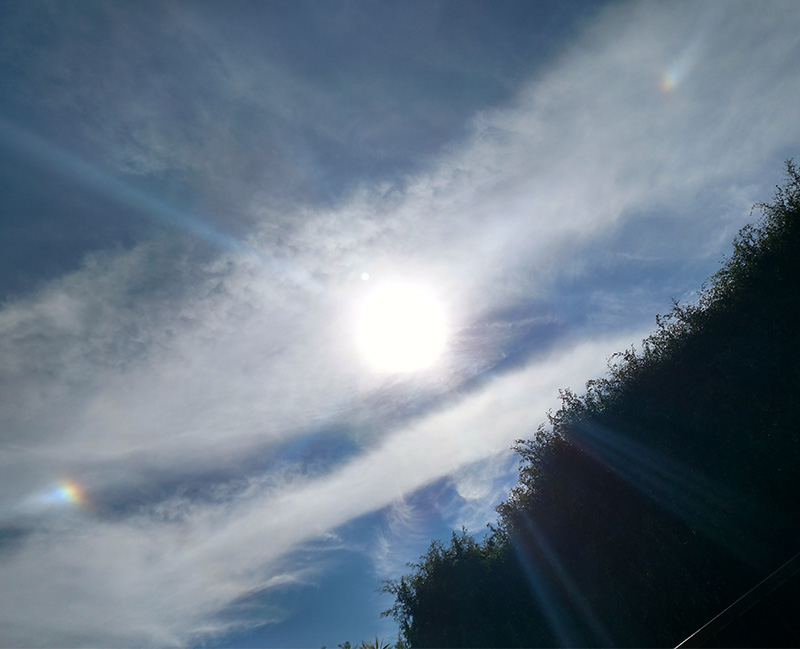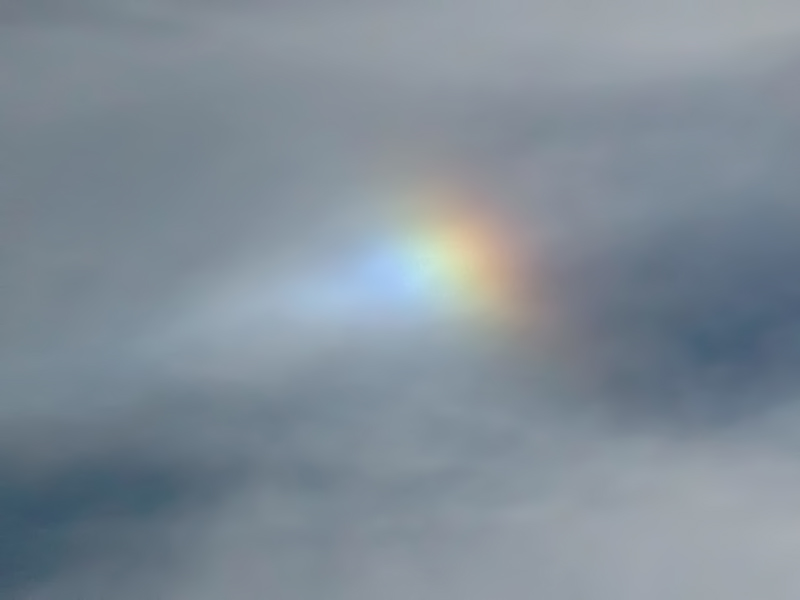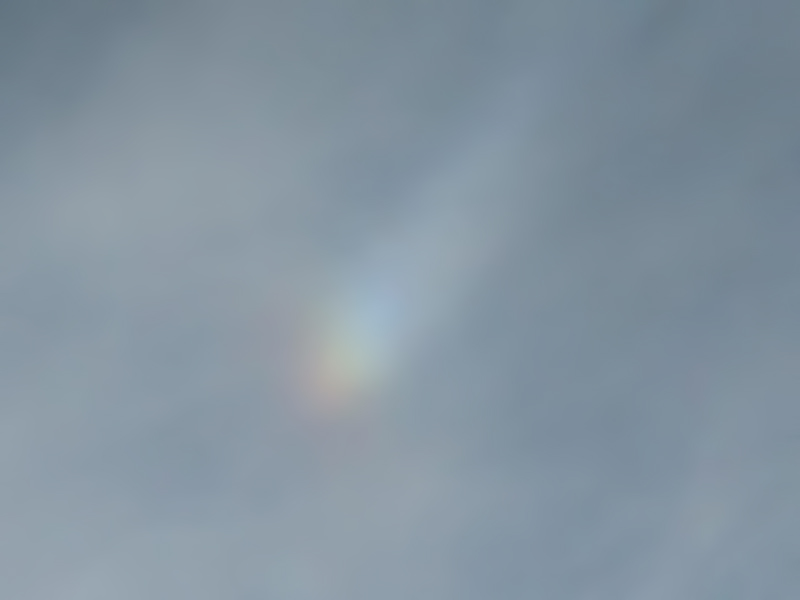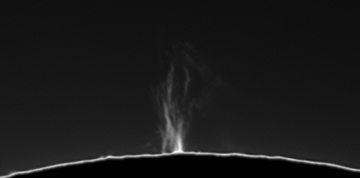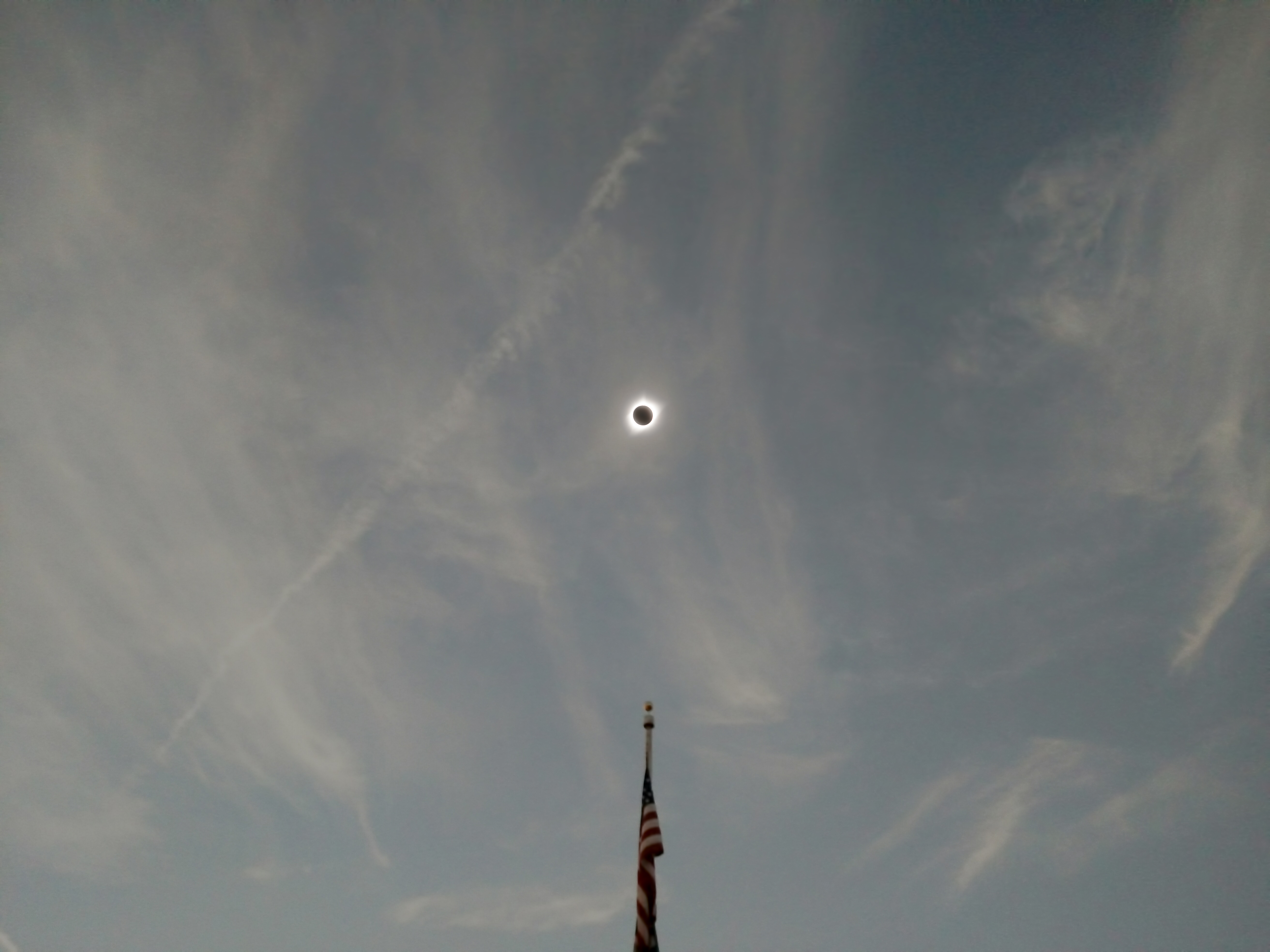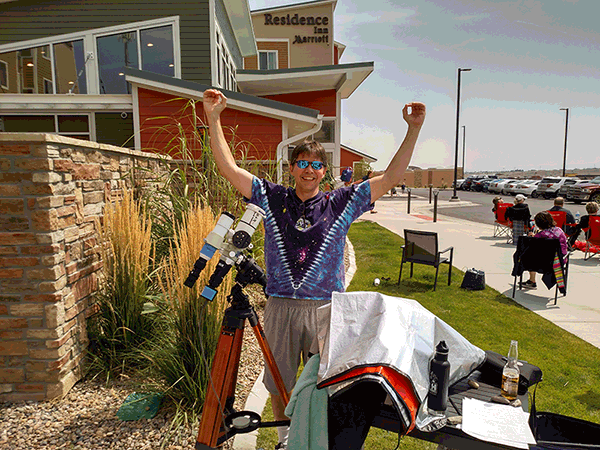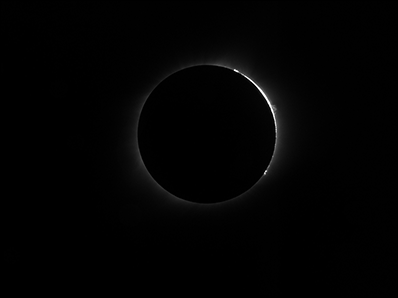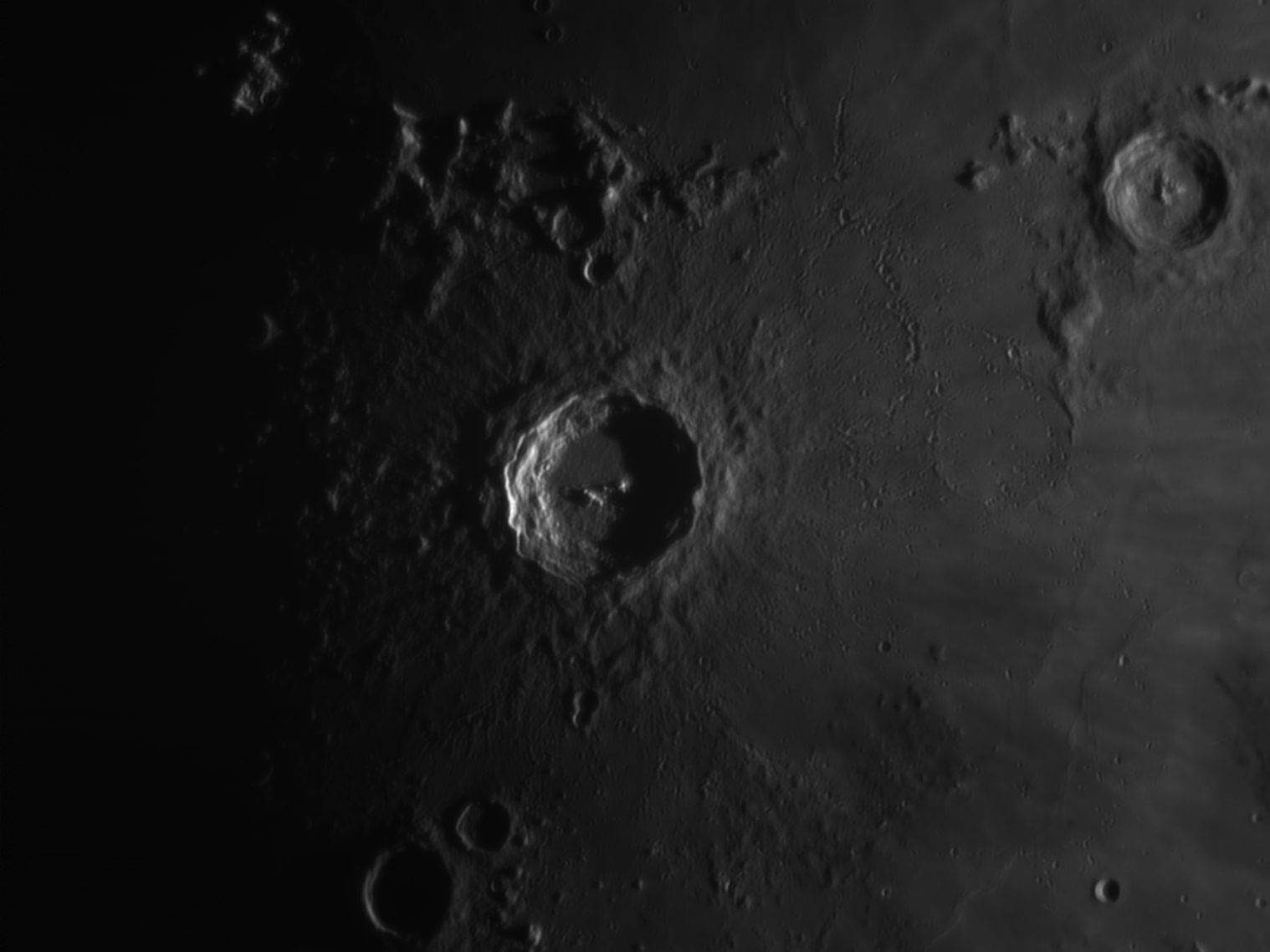 |
| Copernicus 9/10/16 infra red filter click for moon-walk size |
it's easily visible to the naked eye here:
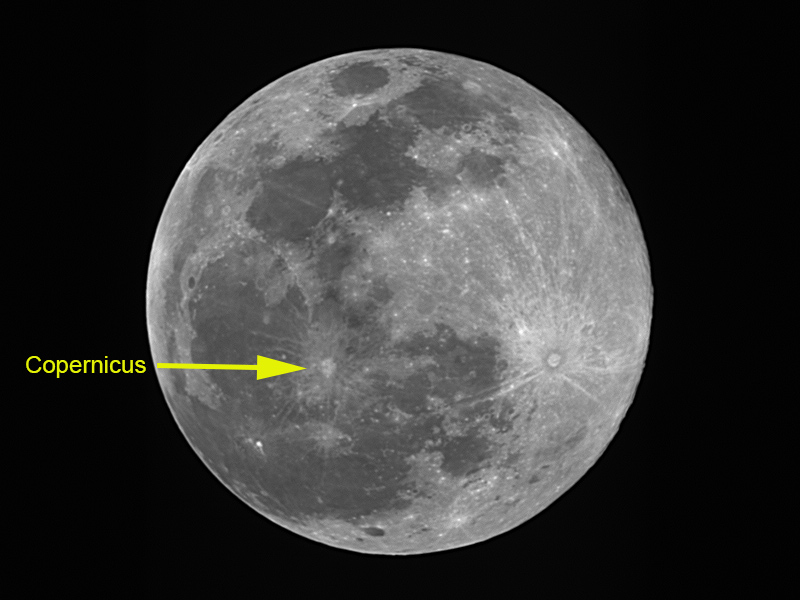 |
| 7/8/17 IR/UV block filter |
Interestingly, the crater was named by a jesuit at a time when church doctrine opposed the heliocentric model. The crafty jesuit justified naming such a prominent crater after the father of the heliocentric model by noting that the astronomer was placed in oceanus procellarum, the "ocean of storms". wikipedia link with more information about the crater
The image of the crater was taken with an infra red filter and a telescope that is "mostly" a reflector (mirrors). it was a test shot which proved that the IR filter was sharper than standard visible filters. more on that in this post on jupiter.
Interestingly, the full disk image was taken with a filter that blocks infra red. why? it was taken with a refractor. refractors use lenses to bend light. since infrared light bends less than visible light (the same phenomenon that made it desirable in the previous image), it doesn't focus well in refractors, creating a blurry image.
Technical notes:
Copernicus: celestron nexstar 8 GPS (8" SCT on a wedge)
ZWO ASI120MM-S
captures with firecapture @ ~58 fps
stacked in autostakkert, Drizzle 3x, then reduced to 1.5x, sharpened in registax 6
9/10/2016
Full disk: DMK 51 and the tiny tak, Takahashi FS-60C, 60 mm aperture at f/4.2 with a reducer. The field of view is approximately 96x72 arc minutes. 1 minute video capture at approximately 12 fps, aligned in autostakkert, wavelets in registax.
7/8/2017
Eastbluff, CA
